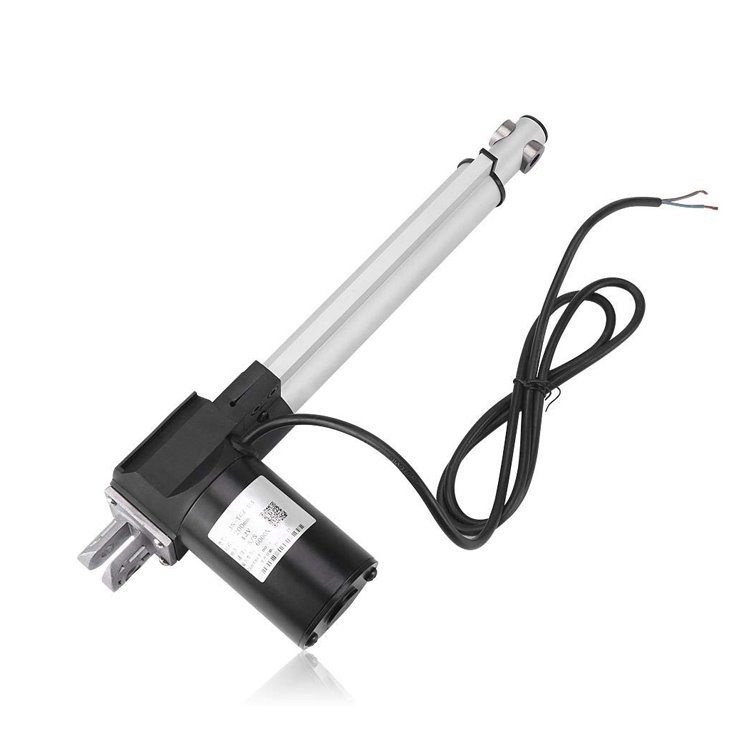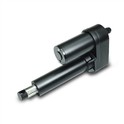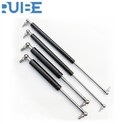What is the accuracy of a linear actuator? Well, if you're in the market for one, you've probably asked yourself this question. As a linear actuator supplier, I've dealt with this topic quite a bit, and I'm here to break it down for you.


Let's start with the basics. A linear actuator is a device that converts rotational motion into linear motion. It's used in a whole bunch of applications, from electric sofas to recliner chairs and industrial machinery. The accuracy of a linear actuator refers to how precisely it can move to a specific position and hold that position over time.
Factors Affecting Linear Actuator Accuracy
There are several factors that can influence the accuracy of a linear actuator. One of the most important ones is the type of drive mechanism. There are different types, like screw drives, belt drives, and rack - and - pinion drives.
Screw drives, for example, are known for their high accuracy. They use a threaded rod to convert rotational motion into linear motion. The pitch of the screw (the distance between the threads) plays a crucial role in determining accuracy. A finer pitch means more precise movement because the actuator moves a smaller distance for each rotation of the screw. However, screw drives can be slower compared to other types.
Belt drives are generally faster but may not offer the same level of accuracy as screw drives. They use a belt to transfer motion from the motor to the actuator. The elasticity of the belt can cause some slight variations in position, which can affect accuracy.
Rack - and - pinion drives are another option. They consist of a toothed rack and a pinion gear. They can provide relatively high - speed movement, but their accuracy can be affected by factors like gear backlash (the small amount of play between the teeth of the gear).
Another factor is the quality of the components. High - quality motors, bearings, and sensors can significantly improve the accuracy of a linear actuator. For instance, a motor with precise speed control can ensure that the actuator moves at a consistent rate, which is essential for accurate positioning. Bearings that are well - made and properly lubricated reduce friction, which can also enhance accuracy.
Sensors are also key. Many modern linear actuators are equipped with position sensors, such as encoders or potentiometers. These sensors can provide feedback to the control system about the actuator's position. The control system can then make adjustments to ensure that the actuator reaches and maintains the desired position. For example, if an encoder detects that the actuator has moved slightly past the target position, the control system can send a signal to the motor to reverse the direction slightly to correct the position.
Accuracy Requirements in Different Applications
The accuracy requirements for linear actuators vary widely depending on the application. Let's take a look at a couple of common applications.
In the case of Linear Actuator for Electric Sofa, the accuracy requirements may not be extremely high. The main goal is to adjust the position of the sofa's backrest or footrest smoothly and comfortably. However, a certain level of accuracy is still needed to ensure that the sofa reaches the desired reclining angle and doesn't overshoot or undershoot. For example, if a customer wants the backrest to be at a 45 - degree angle, the actuator should be able to get close to that angle within a reasonable margin of error, say plus or minus a few degrees.
On the other hand, Linear Actuator for Recliner Chair may have similar but perhaps slightly more refined accuracy needs. Recliner chairs often have multiple positions that users can choose from, and the actuator needs to be able to move to each position accurately. A small error in positioning could make the chair uncomfortable to sit in.
In industrial applications, the accuracy requirements can be much more stringent. For example, in automated manufacturing processes, linear actuators are used to position parts precisely for assembly or machining. In these cases, accuracy in the range of fractions of a millimeter may be required. A small error in positioning could lead to defective products or costly downtime.
Measuring and Specifying Accuracy
When it comes to measuring the accuracy of a linear actuator, there are a few key metrics. One of the most common is positional accuracy, which is the difference between the actual position of the actuator and the desired position. This is usually specified in units like millimeters or inches.
Repeatability is another important metric. It refers to the ability of the actuator to return to the same position repeatedly. A high - repeatability actuator will consistently move to the same position within a small margin of error, even after multiple cycles of movement.
Resolution is also a factor. It's the smallest increment of movement that the actuator can make. A higher - resolution actuator can move in smaller steps, which generally means better accuracy.
As a supplier, we always make sure to provide clear specifications for the accuracy of our Electric Linear Actuator. We test our actuators thoroughly in our labs to ensure that they meet or exceed the specified accuracy levels. We use advanced measuring equipment to measure positional accuracy, repeatability, and resolution.
Importance of Accuracy in the Market
In today's competitive market, accuracy is a major selling point. Customers are looking for linear actuators that can provide reliable and precise performance. For example, furniture manufacturers want actuators that can ensure their products offer a smooth and comfortable experience for users. Industrial customers need actuators that can meet the high - precision requirements of their manufacturing processes.
By offering high - accuracy linear actuators, we can help our customers improve the quality of their products. For furniture makers, this means happier customers who are more likely to recommend their products. In the industrial sector, it can lead to increased productivity and reduced waste due to fewer defective products.
How We Ensure Accuracy as a Supplier
At our company, we take several steps to ensure the accuracy of our linear actuators. First, we source high - quality components from trusted suppliers. We work closely with our motor and sensor manufacturers to ensure that we get the best - in - class products.
During the manufacturing process, we have strict quality control measures in place. Our production line is equipped with advanced testing equipment that can detect any potential issues with accuracy early on. For example, we test the movement of each actuator multiple times to check for positional accuracy and repeatability.
We also offer customization options. Depending on the specific accuracy requirements of our customers, we can adjust the design and components of the actuator. For example, if a customer needs a very high - accuracy actuator for a specialized industrial application, we can use a screw drive with a fine pitch and high - precision sensors.
Contact Us for Your Linear Actuator Needs
If you're in the market for a linear actuator and accuracy is a priority for you, we're here to help. Whether you're a furniture manufacturer looking for actuators for your electric sofas or recliner chairs, or an industrial customer with high - precision requirements, we have the expertise and products to meet your needs.
Don't hesitate to reach out to us to discuss your specific requirements. We can provide you with detailed information about our products, including their accuracy specifications, and help you choose the right linear actuator for your application.
References
- "Motion Control Handbook" by Peter Nachtwey
- "Linear Actuator Technology: Principles and Applications" by John Smith






